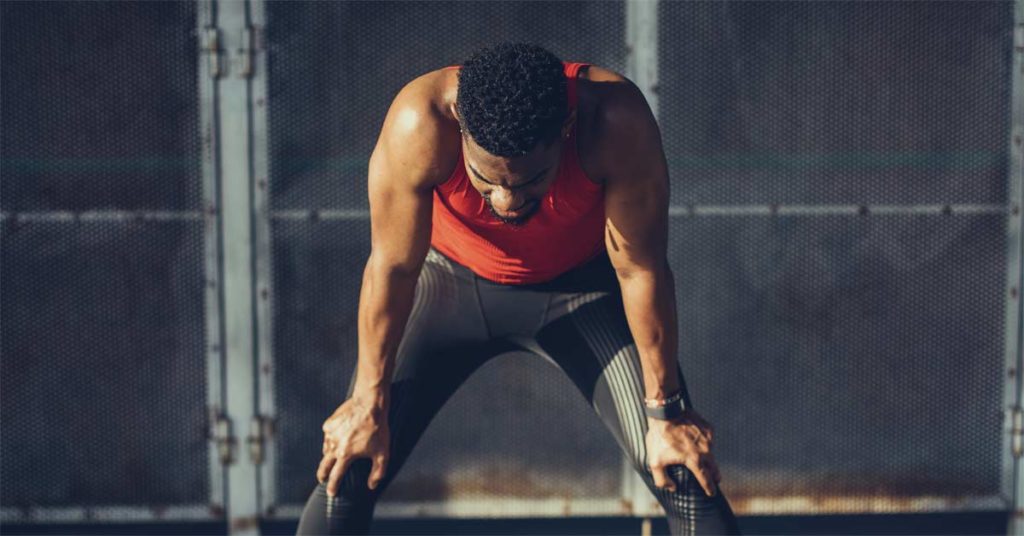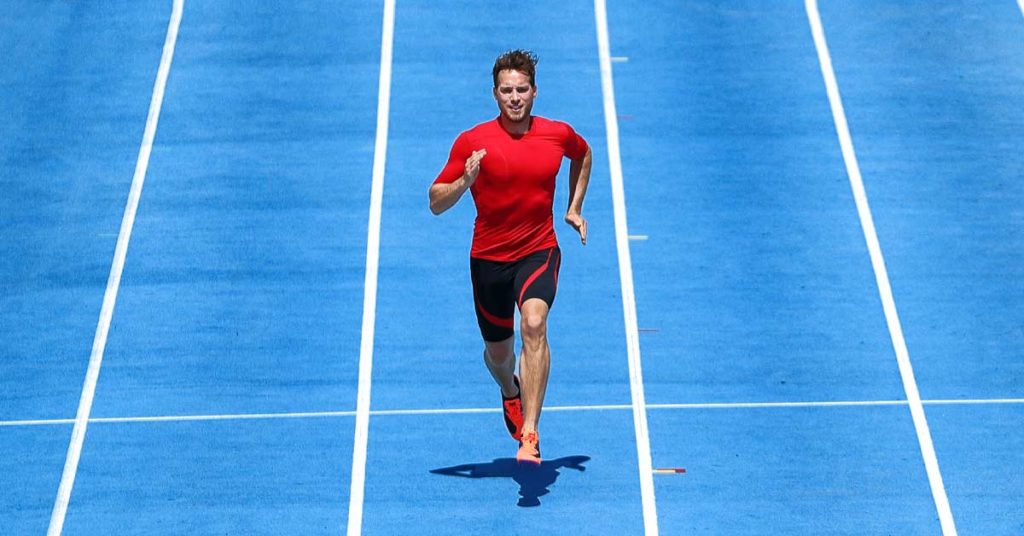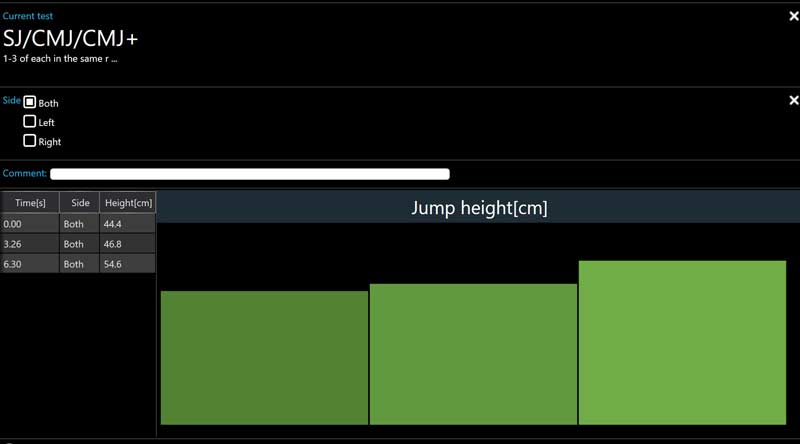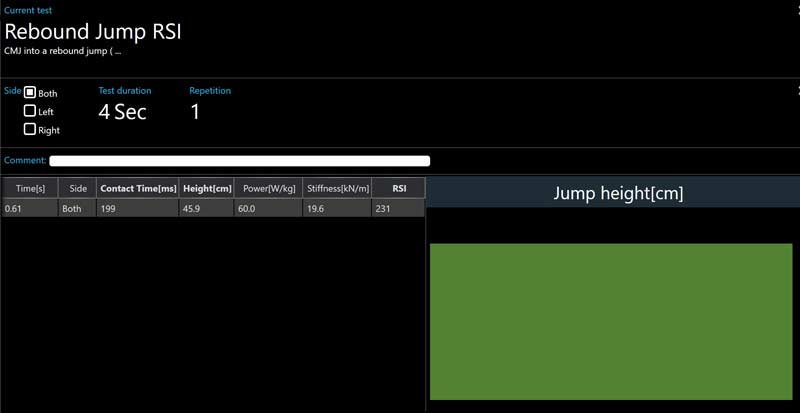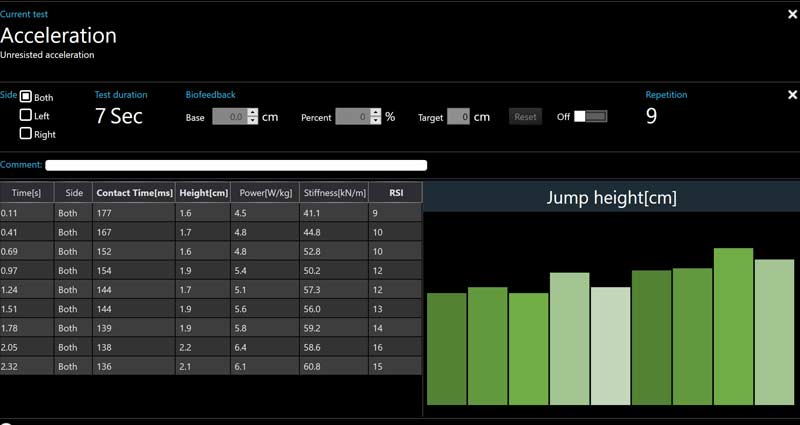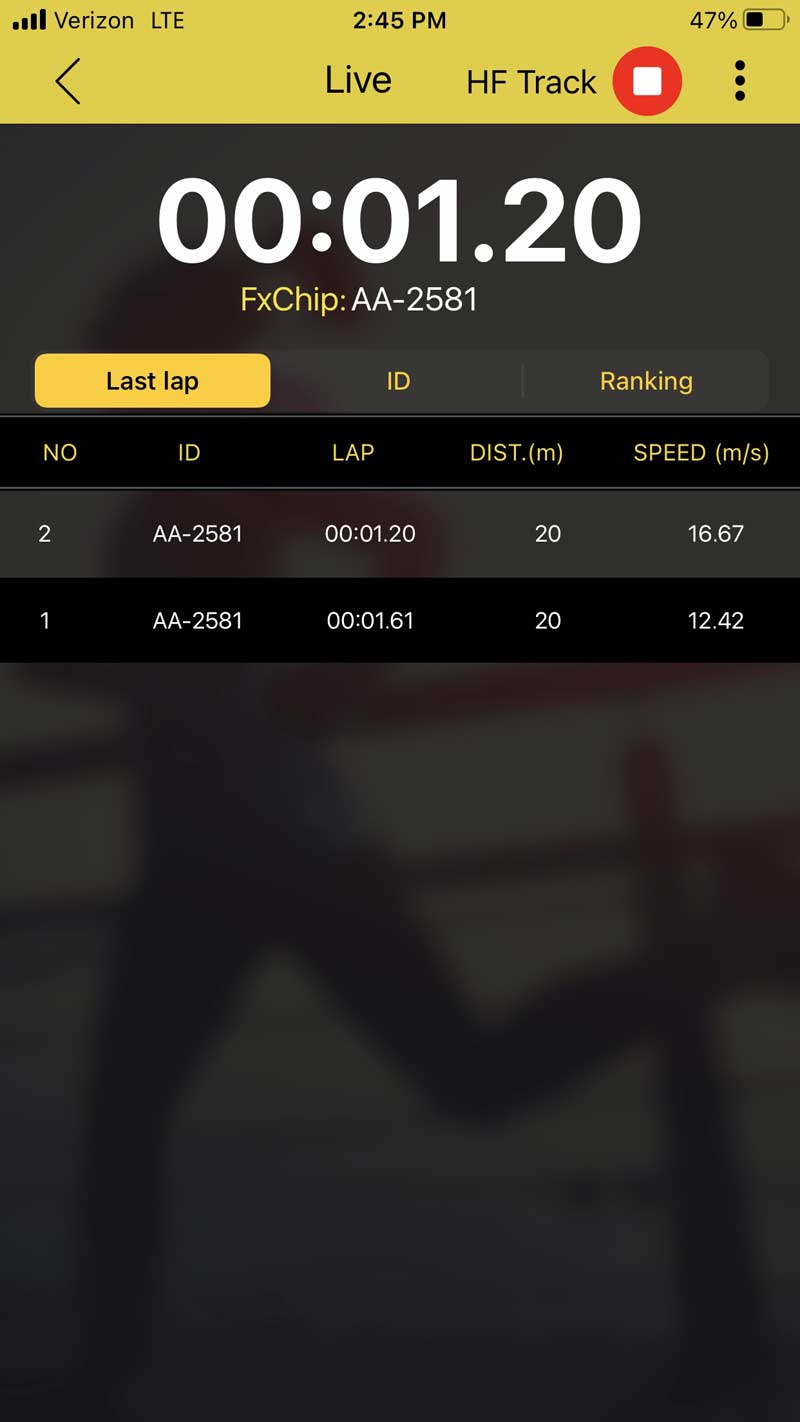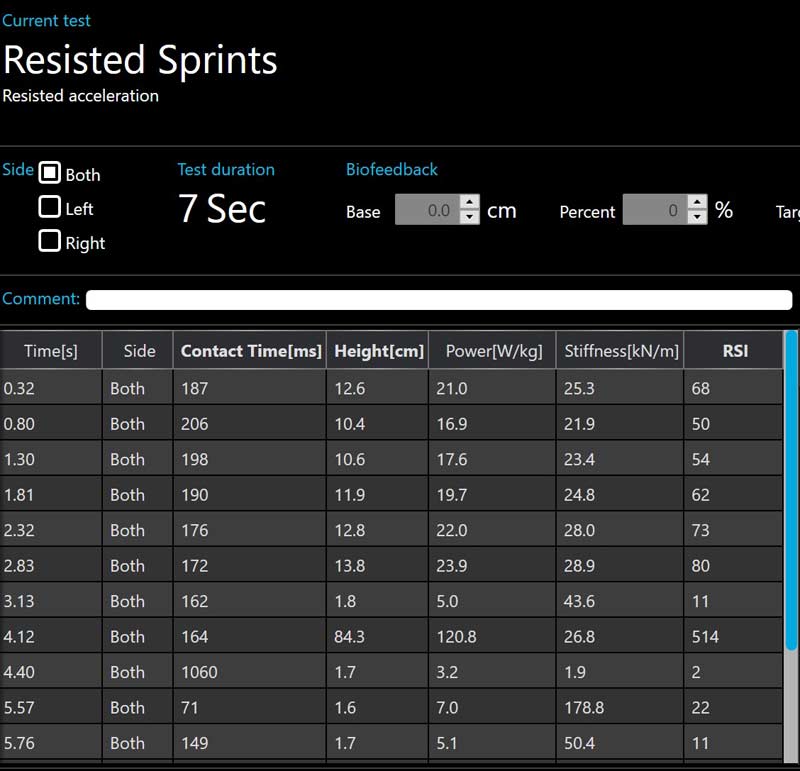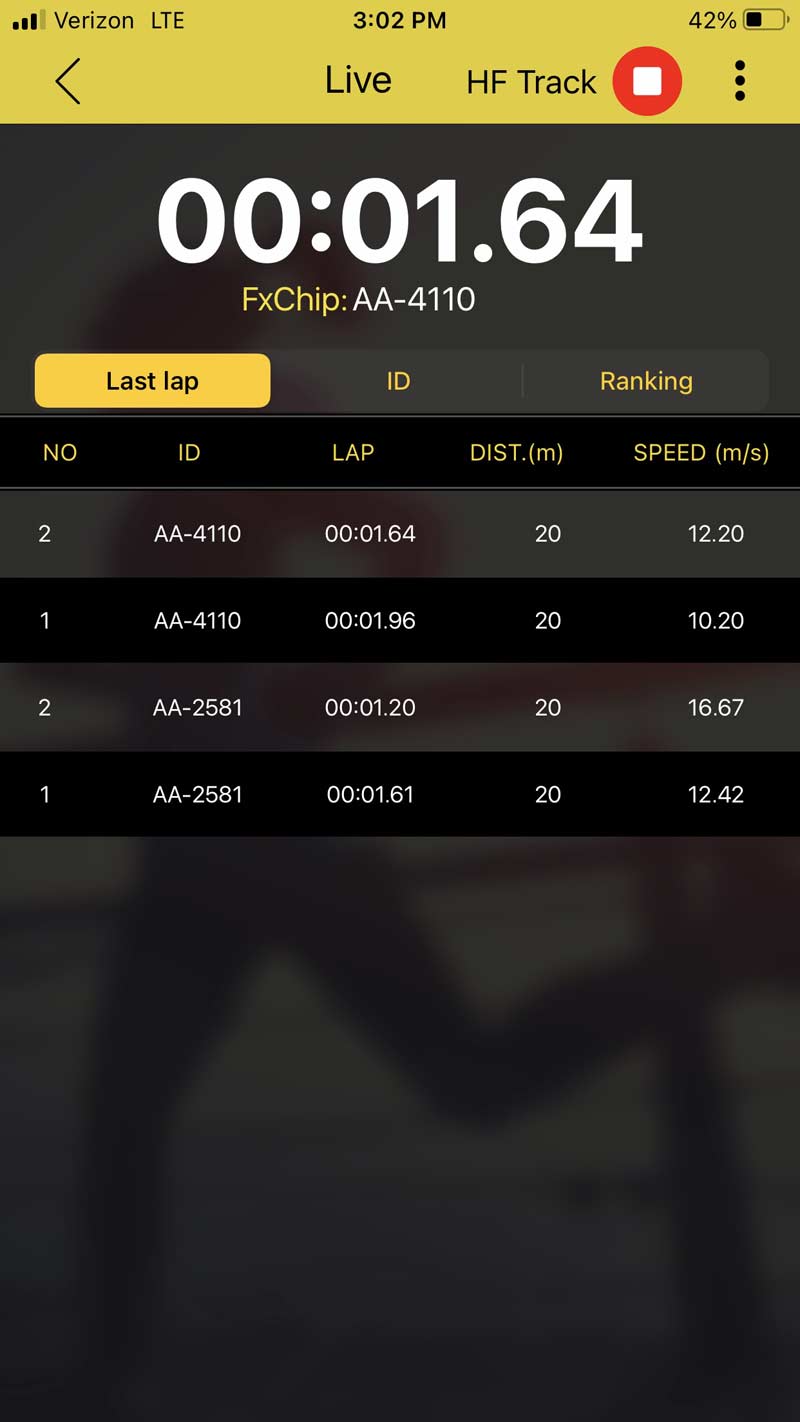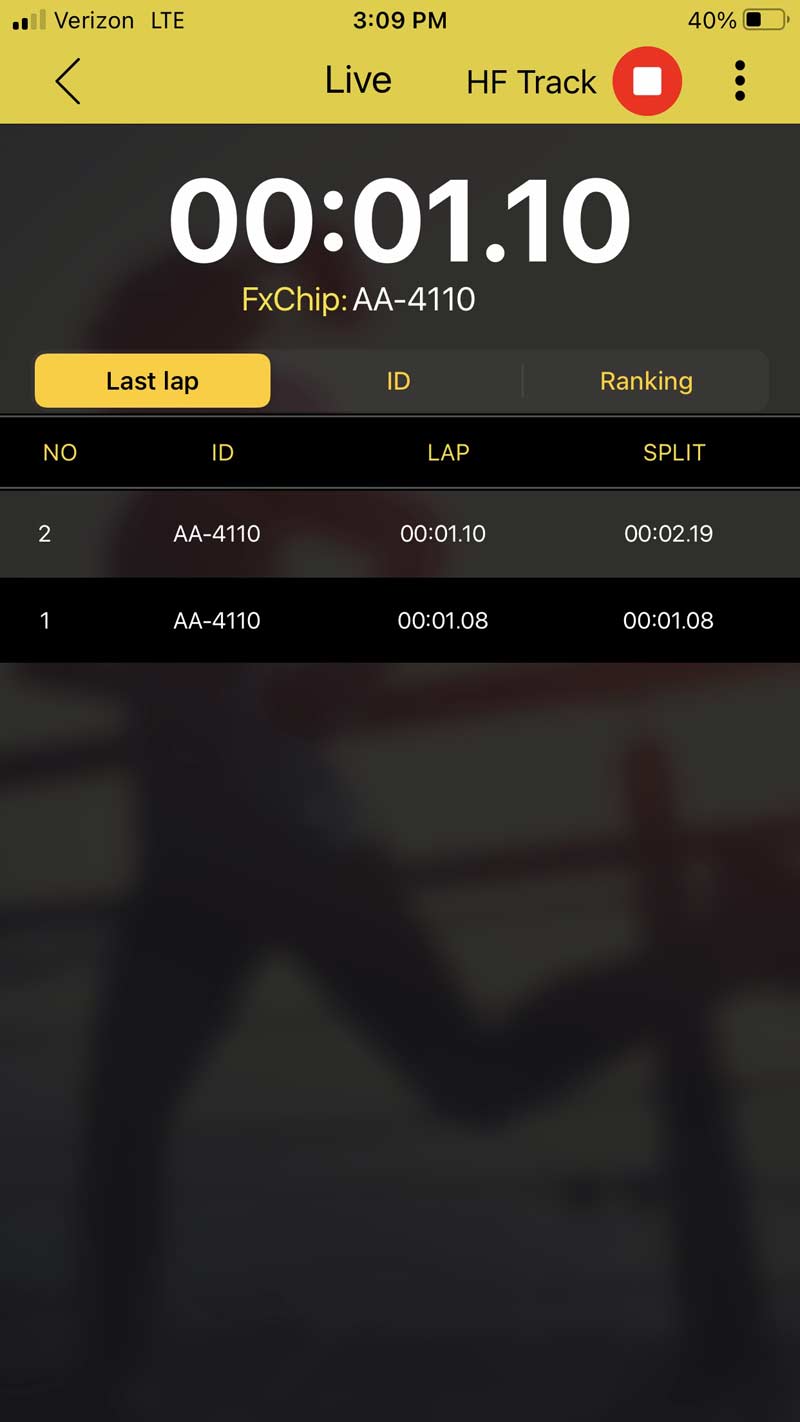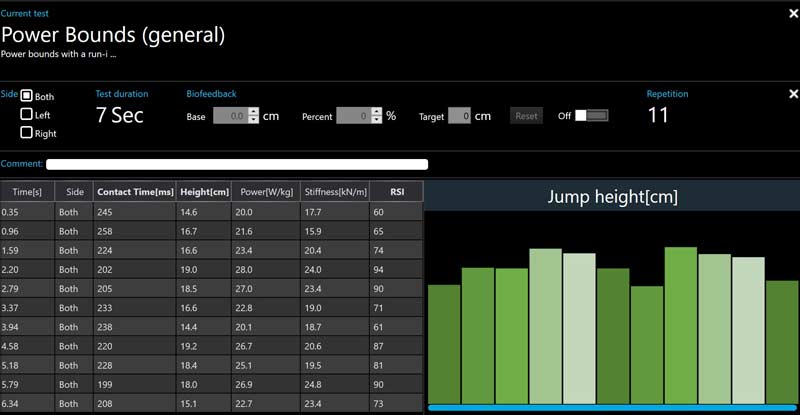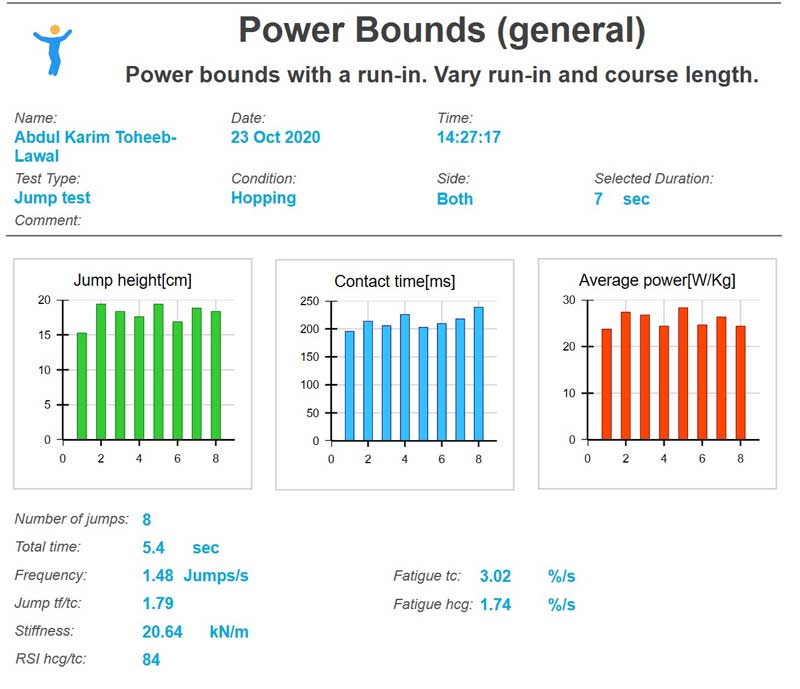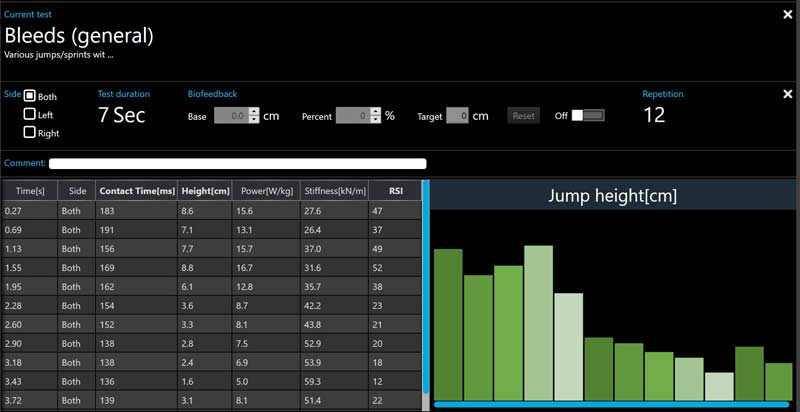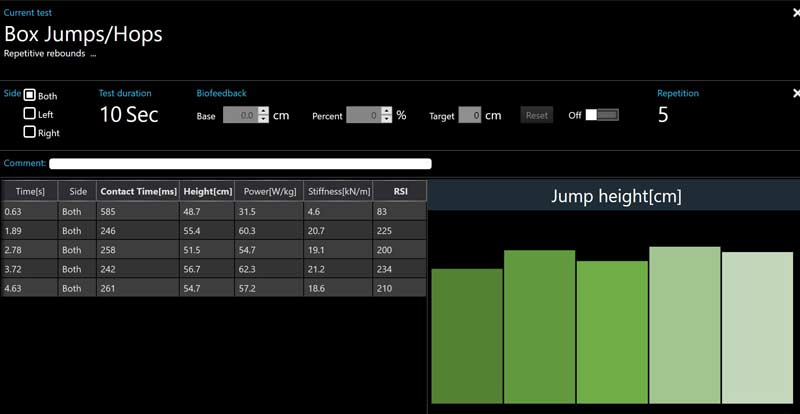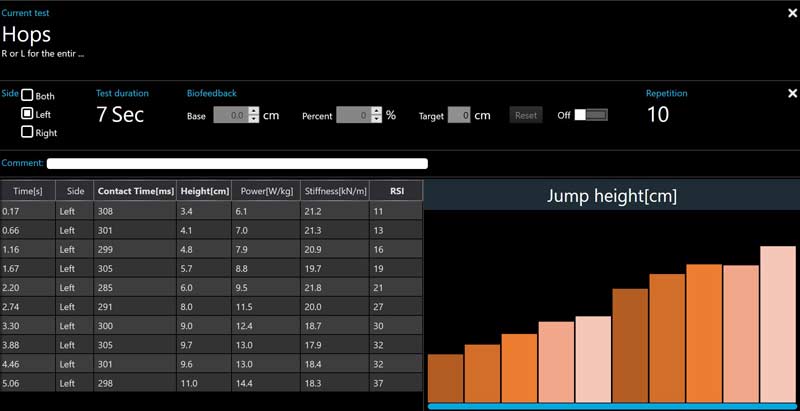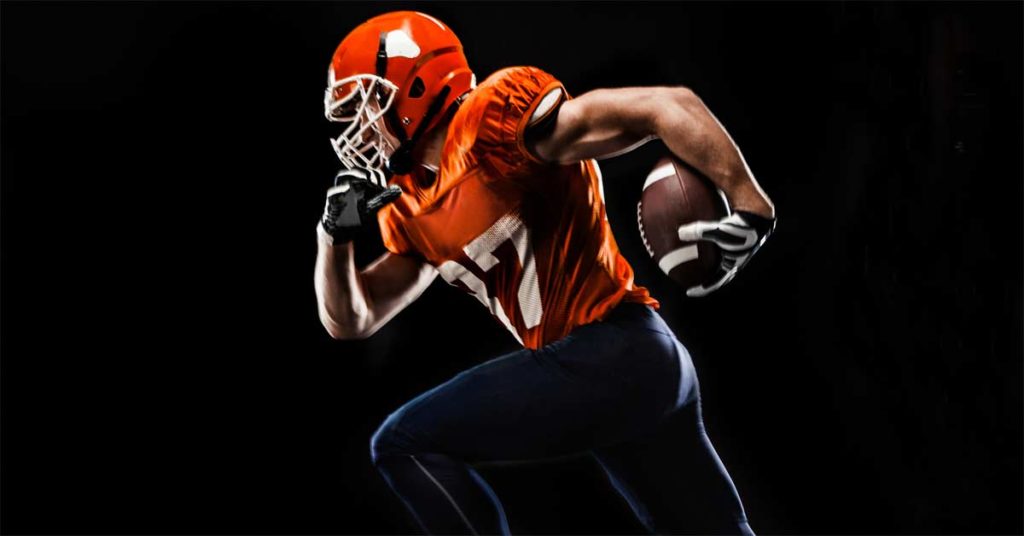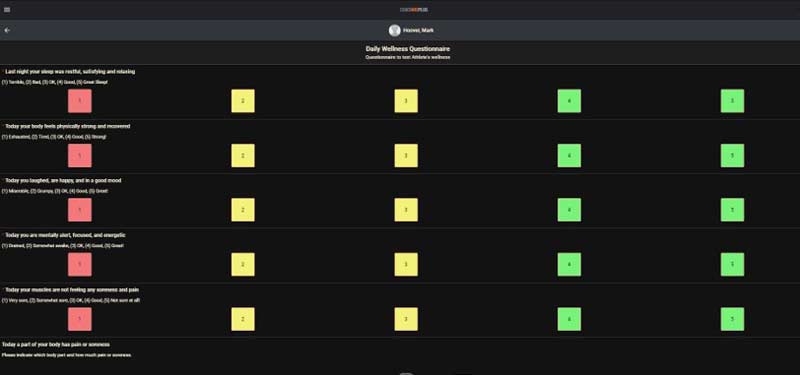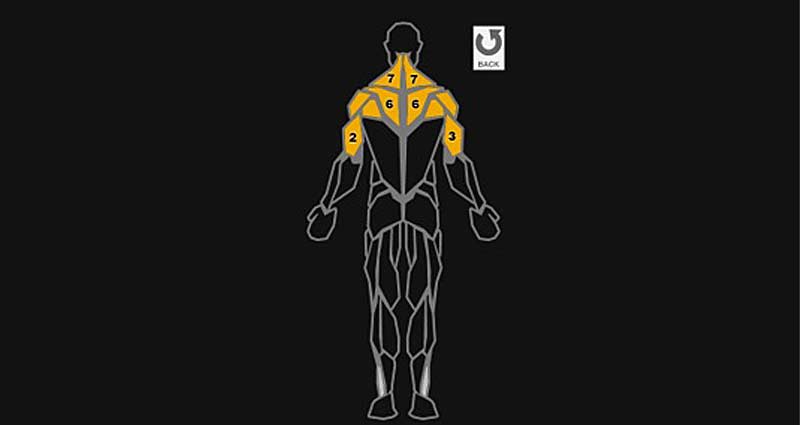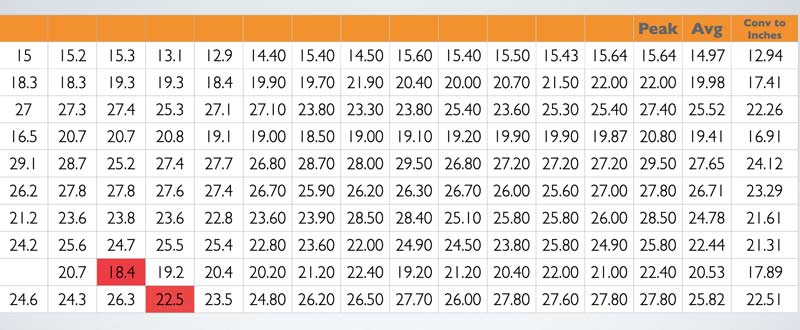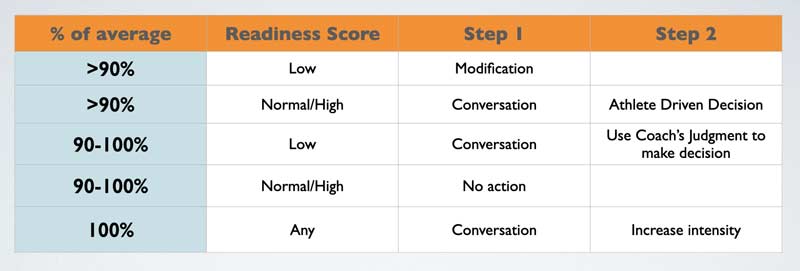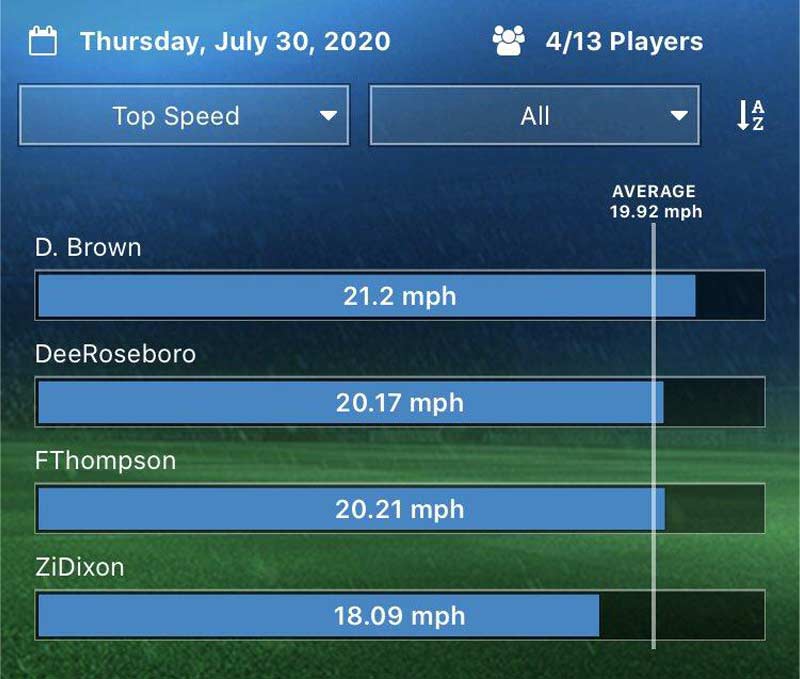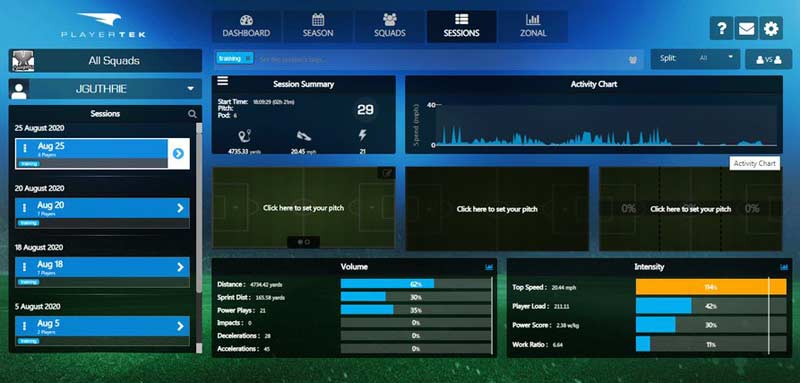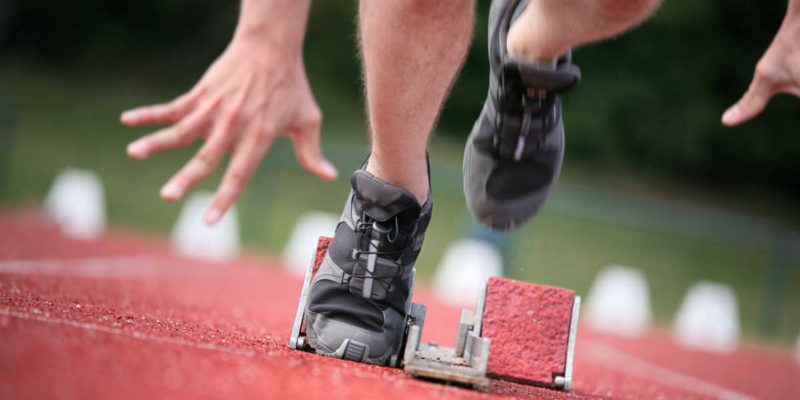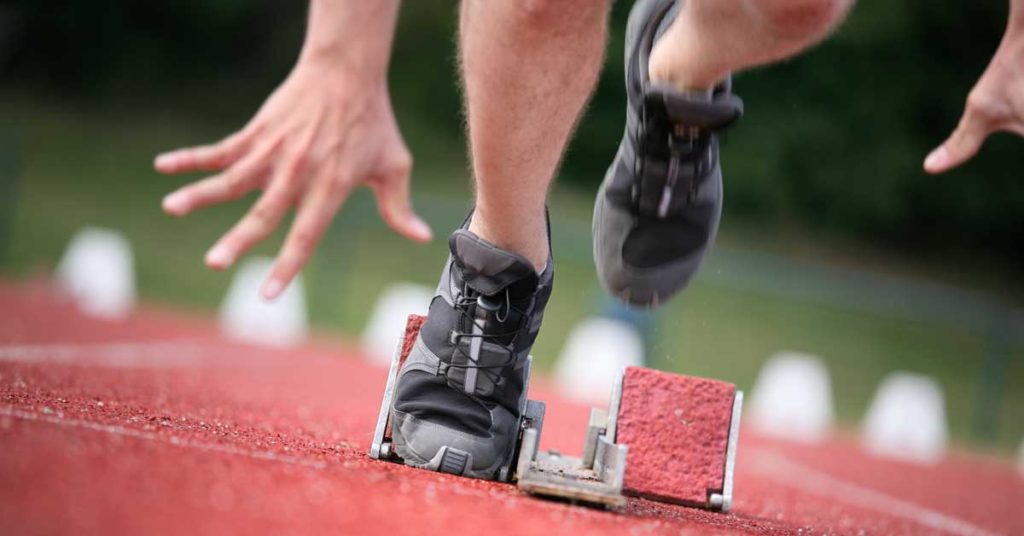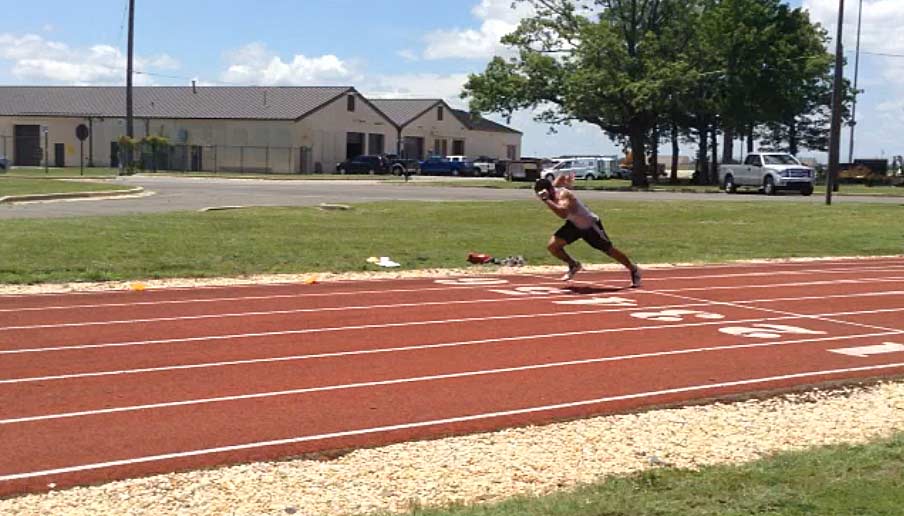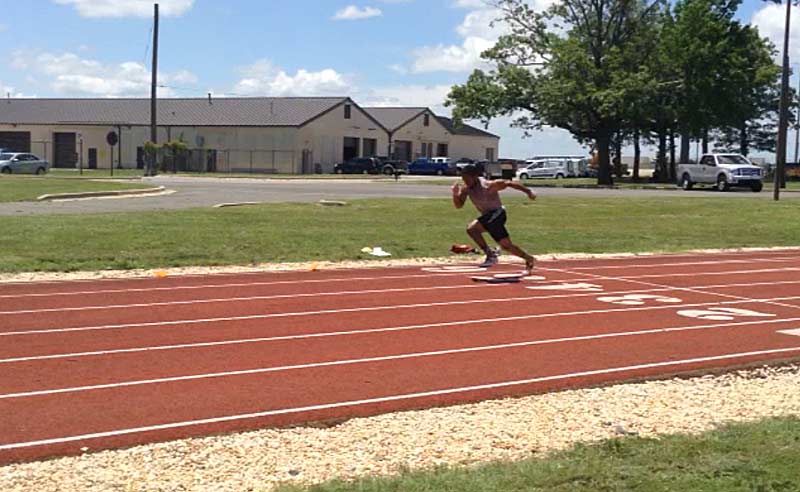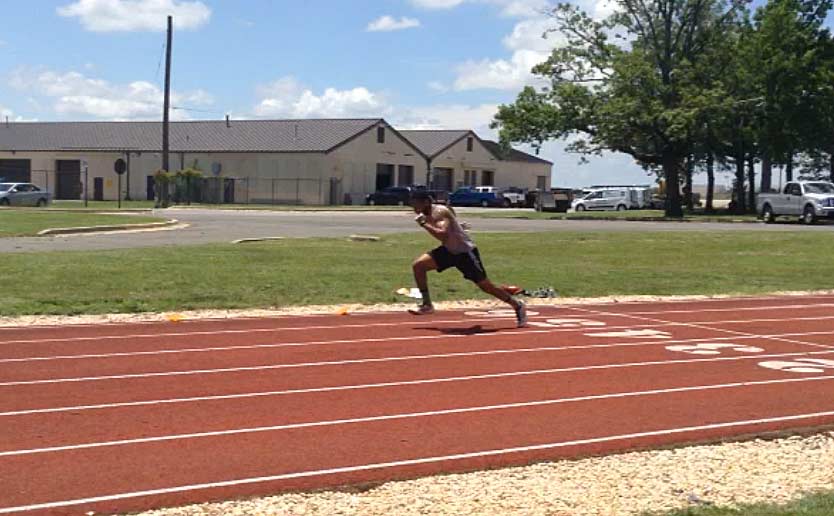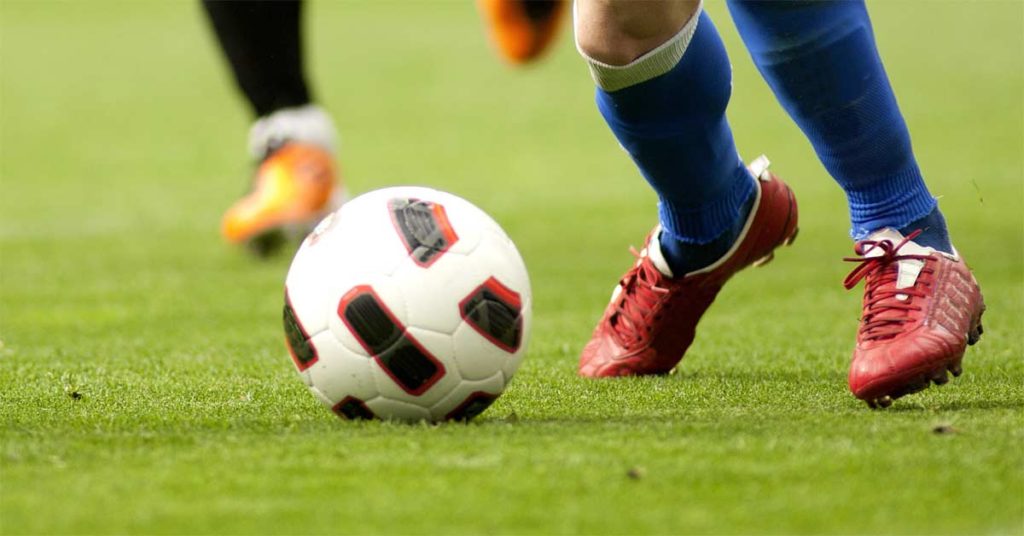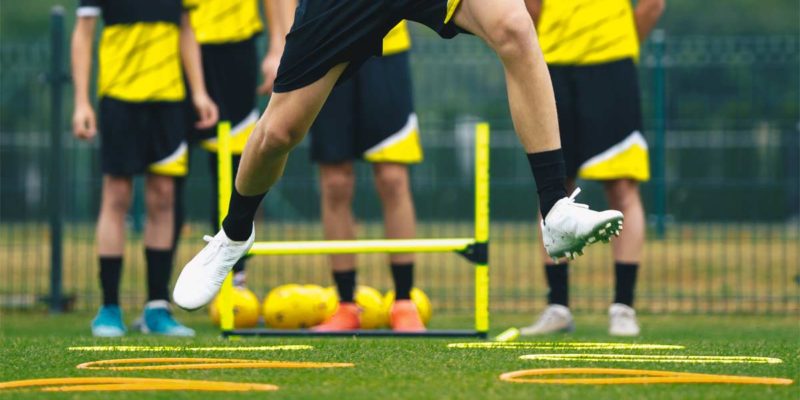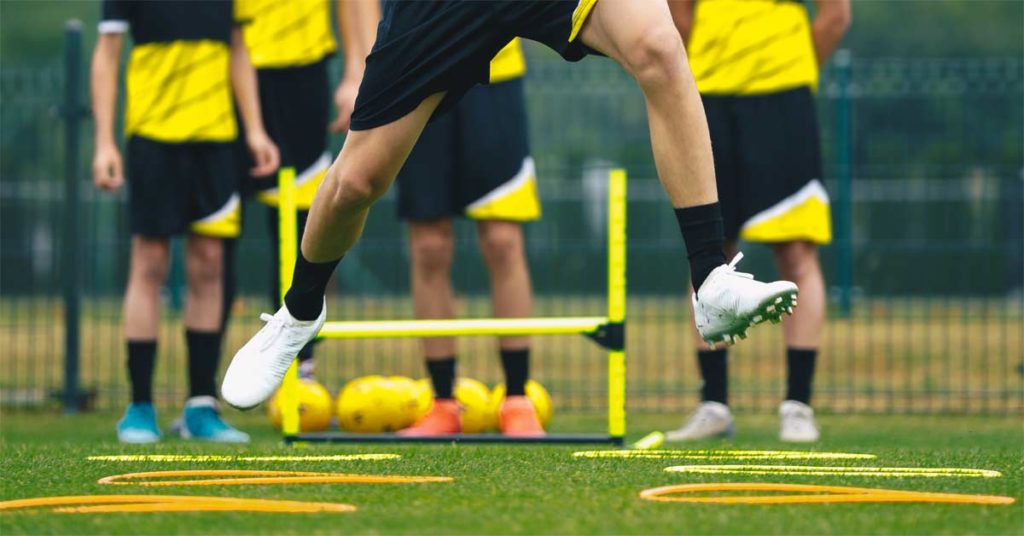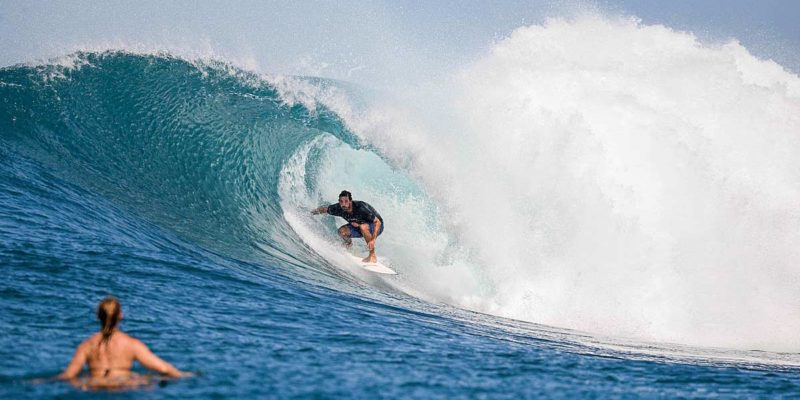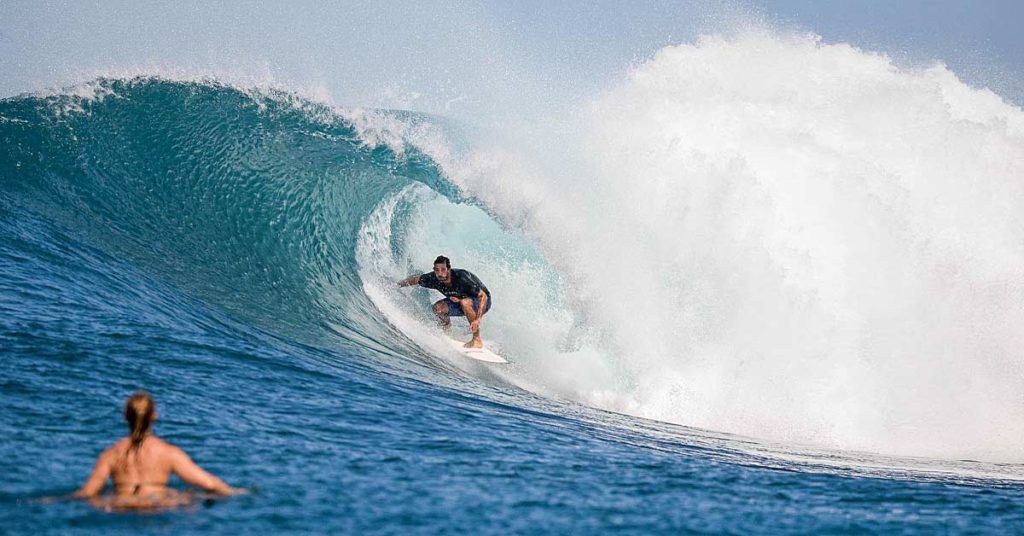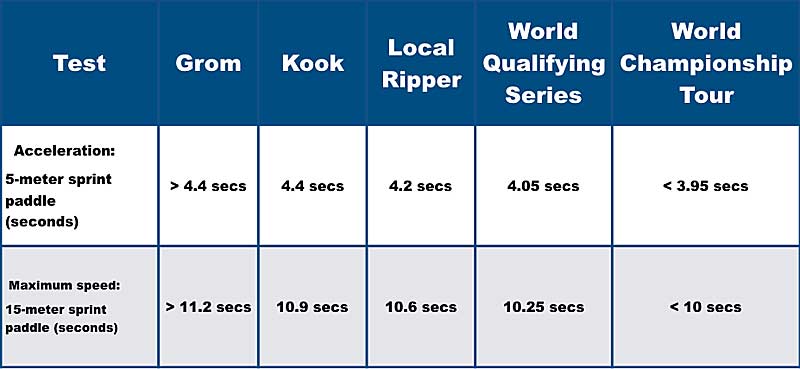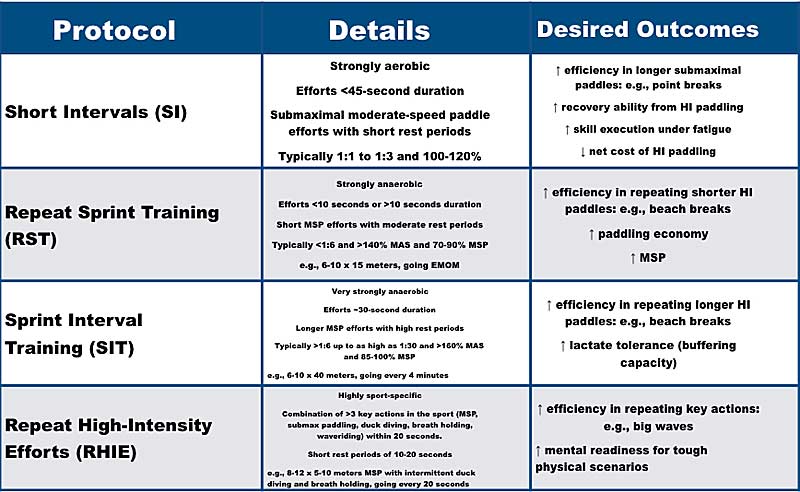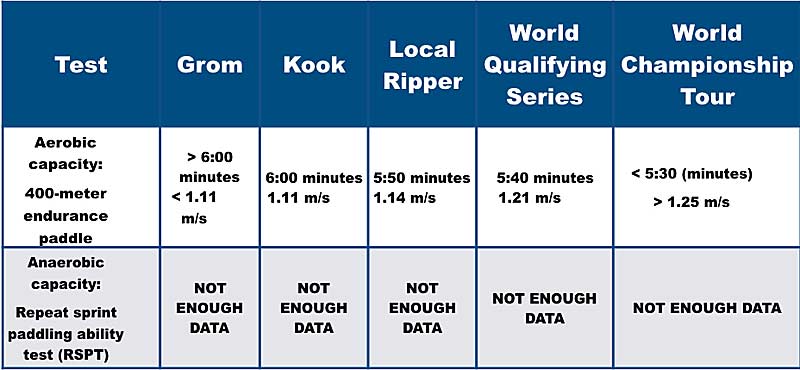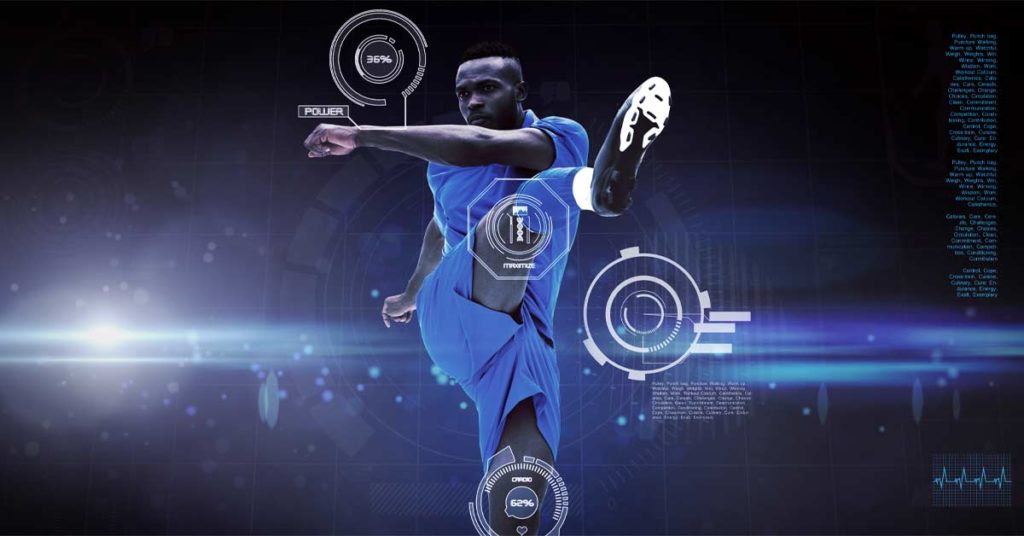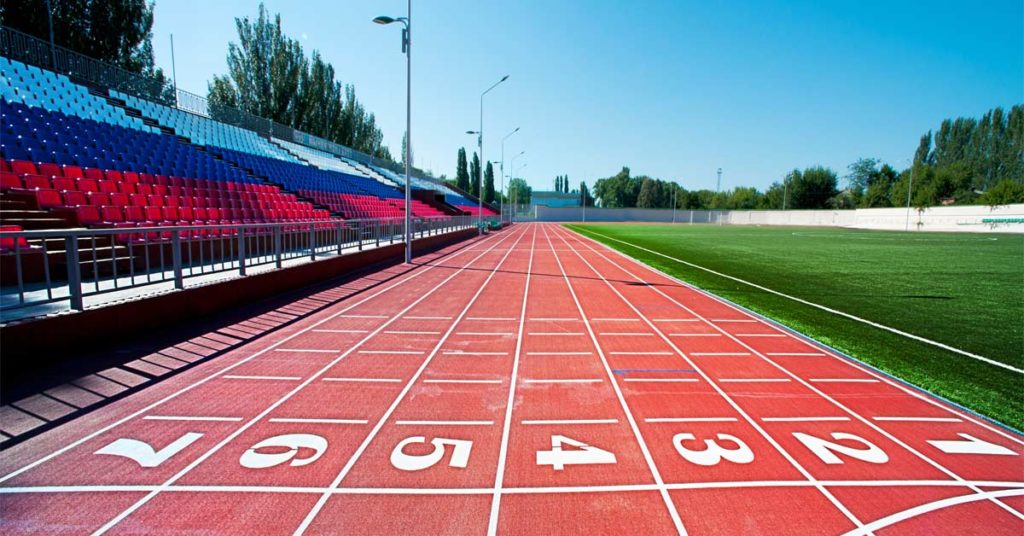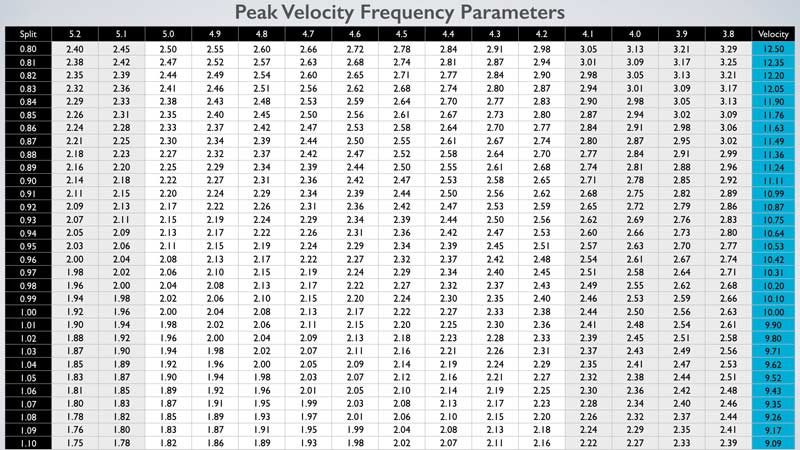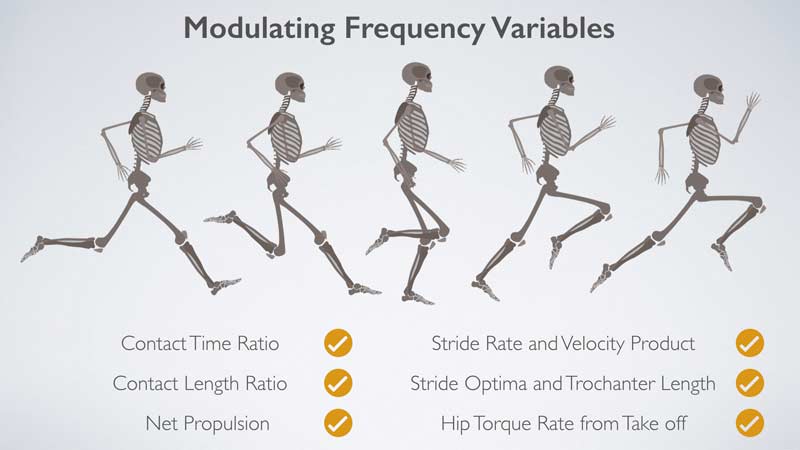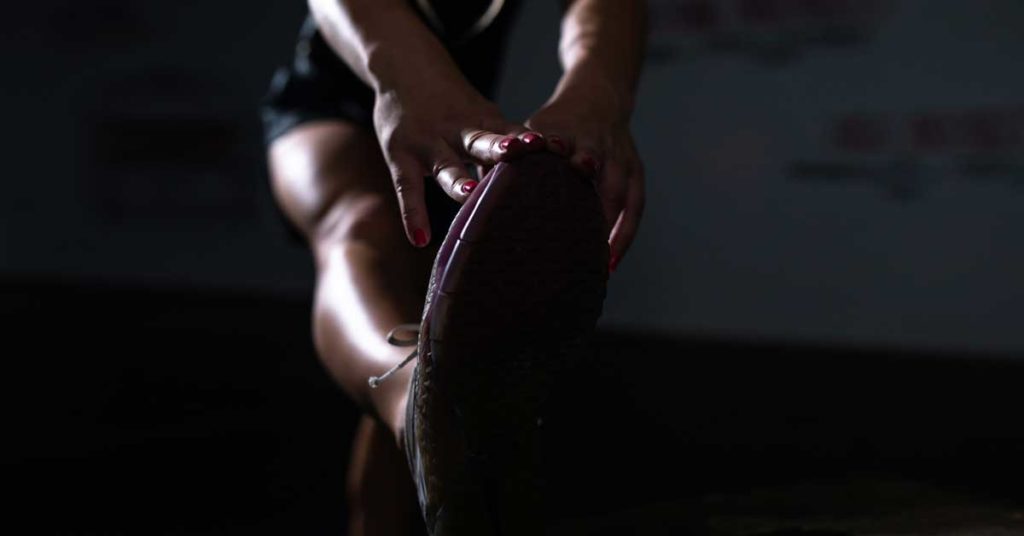
Johan Lahti is an S&C coach (CSCS) at R5 Athletics & Health in Helsinki, Finland. He is currently pursuing his Ph.D. on a multifactorial approach for hamstring injury risk reduction in professional soccer under the supervision of Professor JB Morin and Dr. Pascal Edouard via the University of Cote d’Azur. Physiotherapist Jurdan Mendiguchia functions as an external supervisor.
You can follow him on Twitter (@lahti_johan) and/or on Instagram (@r5.johan). All his research is available on his ResearchGate profile.
Freelap USA: Why is the hamstring particularly vulnerable to injury when compared to other muscles in the body for athletes in team or sprint-based sports?
Johan Lahti: Briefly, the demand for speed! Any sport exposing the athlete to repetitive sprint accelerations, especially involving more upright positions, will arguably place the highest biomechanical demands on the hamstrings. The hamstrings are biarticular muscles designed for propelling us forward.1 When we are in an upright position and starting to sprint in a more cyclical fashion, although peak anterior/posterior ground reaction forces decrease, the motion-dependent forces increase due to the high limb velocities. Concentric hip extension and eccentric knee flexion demands peak at the same time during the late swing phase2, which revs the hamstrings to their max, especially when still aiming to accelerate.
What is interesting is that the hammies have not always been the biggest issue in team sports such as soccer.3 The reason there has been an increase compared to the ’80s seems to be partly explained by the increase in the speed of the game.4 From a biomechanical standpoint, the increase in speed and corresponding demands on the hamstrings is not linear.5 This means that if speed demands increase in the game, the hamstring muscles demands increase at a higher relative rate.
If speed demands increase in the game, the hamstring muscle demands increase at a high relative rate, says (@lahti_johan. Share on XAs the injury etiology is multifactorial, it usually requires big samples to get a risk factor variable to show clear associations when it’s isolated. Screening for hamstring eccentric strength is one good example, as it’s clearly important to consider in training (based on the randomized control trials (RCTs)) but doesn’t always show up to be associated with injury risk. One reason for this is likely that no matter how eccentrically strong you are, if you lack sustainable system support (weak synergistic muscles, imbalances between limbs and/or antagonists, coordination issues, high passive stiffness, lack of sleep or low fatigue tolerance, etc.), you will likely have increased risk for trouble.
Another big one is that performance and flexibility measurements fluctuate substantially during the season.6,7Screening studies tend to only measure once during pre-season and then collect injury data for the entire season. In fact, I’m aware of no hamstring screening studies that have aimed to control for this.
Freelap USA: What is more important to injury rate/risk, in your opinion? Strength deficits and imbalances or markers of running technique?
Johan Lahti: I would hate to choose between them. I think I will try to answer this from both an evidence-based and evidence-guided approach. As injuries take place mostly during sprinting, and there is initial prospective evidence showing technique influences risk, it would make sense that focusing on sprint technique is important. However, if we would use an evidence-based approach (i.e., little room for strong opinions), rationalizing a priority of sprint technique is not plausible as there are no studies (yet) that show we can actually change technique, even in lower level populations.
Furthermore, I’m assuming many S&C team sport coaches may feel out of their depth if they were requested to change high-level team sport athletes’ techniques. It’s not exactly a skill you pick up from a couple of weekend courses. This is why it is likely a smart move for teams to invest in experienced sprint coaches (with team sport experience) to come in and mentor the process. If you cannot afford that, at least you could argue that progressively increasing the volume of high-velocity sprinting is a smart start and then just learn as you go on technique-related stuff.
A recent study by Mendiguchia et al.8 showed that you can change fascicle length in a similar manner as Nordics if you just sprint more. So, to conclude, from an evidence-based approach, it’s easy to say that strength levels and imbalances are more important than sprint technique. But from an evidence-guided standpoint, I would certainly advise you to do both if you feel comfortable—you might as well experiment while doing your mandatory sprint work.
Coaches addressing strength deficits by doing a good job with their strength exercises may actually improve running technique without knowing it, says (@lahti_johan. Share on XWhat is also interesting is that strength deficits and running technique could be highly connected. I’m sure most coaches would agree that someone’s technique in specific types of weighted step-ups and/or split squats will give some prediction value for how they are able to maintain specific positions in sprinting. Therefore, coaches addressing strength deficits by doing a good job with their strength exercises may actually improve running technique without knowing it. This brings us to that nice debate on what strength actually is.
Freelap USA: What element of running technique is the most important for controlling hamstring injury risk, as you see it?
Johan Lahti: Prospective cohort studies show that anterior pelvic tilt and trunk lateral flexion are associated with increased risk.9,10 There is also association to the degree of mechanical power at the knee11, but this is currently more difficult to define what that exactly means from a technical standpoint. So, it seems that focusing on being strong enough to control excessive motion of the pelvis and trunk during sprinting seems to be a great starting point.
Currently, there is growing interest in getting strong enough to control the “kick-back” mechanism.12 By the way, when I say “strong enough,” I mean strong enough at the required velocities at all highly involved joints (ankle, knee, hip, etc.).This means everything from improving intra- to intermuscular coordination to physiological changes in the muscle-tendon unit (MTU) structure. So, by this definition, technique is a component of strength.
The kick-back mechanism (or butt-kicking mechanism) is nicely presented by Cameron Josse on SimpliFaster. Excess motion of the lower limbs behind the center of mass is something that we think contributes to making athletes less robust. This is only a sagittal plane assessment, but as most energy in sprinting is developed there, by far, it seems logical that other biomechanical planes may benefit from addressing issues there. Also, the assessment is relatively straightforward and doesn’t require expensive devices.
Freelap USA: Does range of motion play a role within injury rates of the hamstring? If so, which ranges are important?
Johan Lahti: This is a big question and I think it deserves a longer answer, as there have been some updates on this topic. In short, the primary biomechanical aims behind range of motion exercises that target flexibility (both acute and long-term) are changes in the passive stiffness of the MTU and increased pain tolerance. Sustained increases in flexibility are primarily attributable to the reduced passive stiffness of the MTU and not pain tolerance.13 As practitioners, we are advised to focus on manipulating passive stiffness in some athletes who we consider restricted, as this seems to correspond to changing our angle of peak torque to longer lengths. This is also called “changes in optimal length” (typically measured by an isokinetic device).
Why is this important? Well, muscle strain injuries are the most typical hamstring injuries, and from a biomechanical standpoint, strain is defined as the degree of the MTU lengthening from its optimal length. In other words, the more you work at longer lengths outside of optimal length, the more you strain your MTU. Therefore, within the constraints of a specific task, a longer optimal musculotendinous length will result in a lower relative tissue strain for the same limb movement.
Furthermore, fatigue likely makes things worse, as animal studies show a fatigued muscle has to be strained/lengthened more to absorb the same amount of energy.14 The hamstrings are injured the most during sprinting, specifically during the terminal swing phase, where there are different degrees of MTU strain present.11
Wan et al.15 showed that participants with lower hamstring flexibility (straight leg raise) tended to have their optimal length at shorter lengths, and that less flexible participants tended to move more outside of their hamstrings’ optimal length during sprinting, especially their biceps femoris long head muscle (r2 = 0.45, p = 0.001)16. The same research group recently showed that eight weeks of versatile flexibility training (active, passive, pnf) was as effective as strength training in moving optimal hamstring length to longer lengths.17 This led to substantial reductions in MTU strain during sprinting.17
So, there is evidence to suggest that hamstring flexibility is associated with hamstring optimal length and that changing hamstring flexibility will likely lead to clinically meaningful changes in optimal length. This, in turn, may be of interest in reducing the risk of hamstring injuries…in theory.
Now, let’s go into what the hamstring injury risk reduction studies say. Interventions are scarce, especially less biased research (such as RCTs), but for now there is weak evidence for promoting improved flexibility as an important factor for injury risk reduction. However, I should really emphasize the word “scarce” here. There aren’t any hamstring-focused RCTs done in team sports or track and field, where hamstring injuries are the highest. As a comparison, there are four RCTs researching the role of Nordics.
One very recent RCT study by Azuma and Soyema (2020) focused on reducing lower limb injuries in high school soccer athletes by aiming to increase lower limb flexibility. They managed to significantly reduce non-contact thigh injuries but did not report specifically what type of thigh injuries (posterior/anterior). What is interesting is that they actually reported changes in flexibility (significant improvements in the intervention group), whereas, to my knowledge, similar injury risk reduction RCTs typically don’t report pre-post changes in targeted variables. But the most important part of this study was that the physical therapists were highly involved, providing individual programs and feedback to the intervention group. This study does not come without its limitations, of course, such as not controlling for a placebo effect.
The next level of evidence is cohort studies, where you usually compare one season’s injuries to the next after changing some specific training parameter. To my knowledge, the only quality hamstring flexibility study on this evidence level is by Arnason et al.18, showing no additional effect from flexibility training on reductions in injuries compared to the control group. The study is relatively well done (good sample, used different forms of hamstring stretching, etc.), but it reported typical issues with compliance.
Furthermore, they didn’t provide data on whether the elite soccer players actually changed hamstring flexibility. This arguably would be quite important in such research settings. As it’s quite typical to see all levels of athletes slack off in flexibility exercises (at least in my experience), it would be smart to have some sort of verification if the flexibility exercise actually induced a change in ROM. Kelly Starrett’s mobility videos are a good example of this; he always emphasizes the need to verify acutely pre-post if the exercise actually elicited change.
Then we have prospective non-experimental cohort studies that aim to assess whether some type of hamstring flexibility measurement can indicate increased hamstring injury risk during the season. Here, the evidence is robust—when you isolate hamstring flexibility, it’s quite clear that it has little clinical value in predicting injuries. However, recent evidence using more advanced multivariable statistical models shows that measuring hamstring ROM has good predictive value.19 In other words, hamstring ROM may be of importance when approached from a multifactorial perspective.
Furthermore, it is also interesting to discuss how we measure flexibility. The active knee extension is considered the gold standard, but other options may be of interest. For example, sprint modeling studies have shown that hamstring length can be negatively influenced by the opposite hip flexors.20 This would in turn increase tension in the hamstrings via anterior pelvic tilt, and this tension is not shared evenly between the hamstrings. Nakamura et al.21 showed that the highest increases were in the semimembranosus and the most injured hamstring: biceps femoris long head. Therefore, it may be of interest to test the interaction between the hamstring and the opposite hip flexor’s flexibility, which we have introduced in our recent paper.12 However, it would be reductionist to isolate this to an issue of flexibility; thus, other elements such as lumbopelvic control would come into play here.
I think range of motion assessment has value and/or potential in reducing hamstring injury rates when it’s a part of a larger toolbox, says (@lahti_johan. Share on XThe ship has not sailed on exploring the value of the hamstring range of motion assessment. Personally, as a coach I think range of motion assessment has value/potential in reducing hamstring injury rates when it’s a part of a larger toolbox.
Freelap USA: Based on your latest research, what are some practical, holistic ideas to create more robust athletes with less risk of hamstring injury?
Johan Lahti: We have described our multifactorial approach for professional soccer in a recent publication.12Furthermore, Kyle Davey described this approach in a recent SimpliFaster blog post. We divided our approach into posterior chain strength, lumbopelvic control, range of motion, and sprint mechanical output. Although the focus was soccer, these categories are arguably important in any sprint-based team sport with hamstring issues.
It is good to remind the reader that the assumption here is that everything else is in place that is also essential for managing all injuries, including sleep habits, nutrition, and general conditioning. We cannot yet give stronger conclusions on whether this approach works successfully in reducing hamstring injuries in pro soccer, as the study had to be postponed due to COVID-19. Furthermore, as there are many elements in this approach, it will be impossible to say what actually helped if it is successful. We need much more research in each category, including lumbopelvic control, to understand the mechanisms at play. However, the response from the coaching staff on the professional soccer teams was great, so we are excited about continuing.
Physiotherapist and researcher Jurdan Mendiguchia has been highly involved in sharing his methods for a multifactorial approach, based on his 10+ years of work in high-level sports. His recent study on changing anterior pelvic tilt in normal gait was a really important step in helping us understand lumbopelvic training.22However, it is logical that skeptics will want to see actual changes in sprint technique. Thankfully, Jurdan has been one step ahead, with upcoming evidence from him and his research team bringing more clarity to unanswered questions. Of course, all of this needs to be reproduced, but all in its time.
Then, last but not least, the importance of a good physical preparation team cannot be understated! As there are many things to think of and other injuries to consider, we need to put our heads together. There’s too much info for one person to digest. This means that, in some cases, physios need to start thinking like S&C coaches and S&C coaches like physios. Work together for the best results.
Since you’re here…
…we have a small favor to ask. More people are reading SimpliFaster than ever, and each week we bring you compelling content from coaches, sport scientists, and physiotherapists who are devoted to building better athletes. Please take a moment to share the articles on social media, engage the authors with questions and comments below, and link to articles when appropriate if you have a blog or participate on forums of related topics. — SF
References
1. Jacobs, R., and G. J. van Ingen Schenau. “Control of an External Force in Leg Extensions in Humans.” The Journal of Physiology. 1992;457(1):611-626. http://doi.wiley.com/10.1113/jphysiol.1992.sp019397 (March 1, 2020).
2. Zhong, Yunjian, et al. “Joint Torque and Mechanical Power of Lower Extremity and Its Relevance to Hamstring Strain during Sprint Running.” 2017.
3. Ekstrand, Jan and Jan Gillquist. “Soccer Injuries and Their Mechanisms: A Prospective Study.” Medicine and Science in Sports and Exercise. 1983;15(3):267-270. https://pubmed.ncbi.nlm.nih.gov/6621313/ (July 27, 2020).
4. Haugen, Thomas A., Espen Tønnessen, and Stephen Seiler. “Anaerobic Performance Testing of Professional Soccer Players 1995-2010.” International Journal of Sports Physiology and Performance. 2013;8(2):148-156. https://pubmed.ncbi.nlm.nih.gov/22868347/ (July 18, 2020).
5. Dorn, Tim W., Anthony G. Schache, and Marcus G. Pandy. “Muscular Strategy Shift in Human Running: Dependence of Running Speed on Hip and Ankle Muscle Performance.” Journal of Experimental Biology. 2012;215(11):1944-1956.
6. Jiménez-Reyes, Pedro, et al. “Seasonal Changes in the Sprint Acceleration Force-Velocity Profile of Elite Male Soccer Players.” Journal of Strength and Conditioning Research. 2020. 1. https://pubmed.ncbi.nlm.nih.gov/32329976/ (July 14, 2020).
7. Moreno-Pérez, Victor, et al. “Acute and Chronic Effects of Competition on Ankle Dorsiflexion ROM in Professional Football Players.” European Journal of Sport Science. 2020;20(1):51-60. https://pubmed.ncbi.nlm.nih.gov/31072261/ (August 7, 2020).
8. Mendiguchia, Jurdan, Filipe Conceição, et al. “Sprint versus Isolated Eccentric Training: Comparative Effects on Hamstring Architecture and Performance in Soccer Players” ed. Daniel Boullosa. PLOS ONE. 2020;15(2):e0228283. https://dx.plos.org/10.1371/journal.pone.0228283 (September 5, 2020).
9. Kenneally-Dabrowski, Claire, et al. “Late Swing Running Mechanics Influence Hamstring Injury Susceptibility in Elite Rugby Athletes: A Prospective Exploratory Analysis.” Journal of Biomechanics. 2019;92:112-119.
10. Schuermans, Joke, et al. “Deviating Running Kinematics and Hamstring Injury Susceptibility in Male Soccer Players: Cause or Consequence?” Gait and Posture. 2017;57:270-277.
11. Kenneally‐Dabrowski, Claire J. B., et al. “Late Swing or Early Stance? A Narrative Review of Hamstring Injury Mechanisms during High‐speed Running.” Scandinavian Journal of Medicine & Science in Sports. 2019;29(8): sms.13437. https://onlinelibrary.wiley.com/doi/abs/10.1111/sms.13437 (November 22, 2020).
12. Lahti, Johan et al. “Multifactorial Individualised Programme for Hamstring Muscle Injury Risk Reduction in Professional Football: Protocol for a Prospective Cohort Study.” BMJ Open Sport & Exercise Medicine. 2020;6(1): e000758. http://bmjopensem.bmj.com/ (October 3, 2020).
13. Opplert, Jules, and Nicolas Babault. “Acute Effects of Dynamic Stretching on Muscle Flexibility and Performance: An Analysis of the Current Literature.” Sports Medicine. 2018;48(2):299-325. https://pubmed.ncbi.nlm.nih.gov/29063454/ (November 22, 2020).
14. Mair, Scott D., Anthony V. Seaber, Richard R. Glisson, and William E. Garrett. “The Role of Fatigue in Susceptibility to Acute Muscle Strain Injury.” The American Journal of Sports Medicine. 1996;24(2):137-143. http://www.ncbi.nlm.nih.gov/pubmed/8775109 (May 6, 2018).
15. Wan, Xianglin, et al. “Relationships among Hamstring Muscle Optimal Length and Hamstring Flexibility and Strength.” Journal of Sport and Health Science. 2017;6(3):275-282. http://www.ncbi.nlm.nih.gov/pubmed/30356560 (November 1, 2018).
16. Wan, Xianglin, et al. “The Effect of Hamstring Flexibility on Peak Hamstring Muscle Strain in Sprinting.” Journal of Sport and Health Science. 2017;6(3):283-289. http://www.ncbi.nlm.nih.gov/pubmed/30356628 (November 1, 2018).
17. Wan, Xianglin, et al. “Effects of Flexibility and Strength Training on Peak Hamstring Musculotendinous Strains during Sprinting.” Journal of Sport and Health Science. 2020.
18. Árnason, A., Andersen, T.E., Holme, I., Engebretsen, L., and Bahr, R. “Prevention of Hamstring Strains in Elite Soccer: An Intervention Study.” Scandinavian Journal of Medicine & Science in Sports. 2007;18(1):40-48.
19. Ayala, Francisco, et al. “A Preventive Model for Hamstring Injuries in Professional Soccer: Learning Algorithms.” International Journal of Sports Medicine. 2019;40(5):344-353.
20. Chumanov, Elizabeth S., Bryan C. Heiderscheit, and Darryl G. Thelen. “The Effect of Speed and Influence of Individual Muscles on Hamstring Mechanics during the Swing Phase of Sprinting.” Journal of Biomechanics. 2007;40(16):3555-3562. http://www.ncbi.nlm.nih.gov/pubmed/17659291 (May 6, 2018).
21. Nakamura, Masatoshi, et al. “The Difference in Passive Tension Applied to the Muscles Composing the Hamstrings – Comparison among Muscles Using Ultrasound Shear Wave Elastography.” Manual Therapy. 2016; 24:1-6. https://pubmed.ncbi.nlm.nih.gov/27317500/ (November 27, 2020).
22. Mendiguchia, Jurdan, Angel Gonzalez De la Flor, et al. “Training-Induced Changes in Anterior Pelvic Tilt: Potential Implications for Hamstring Strain Injuries Management.” Journal of Sports Sciences. 2020:1-8. https://www.tandfonline.com/doi/full/10.1080/02640414.2020.1845439 (November 27, 2020).


